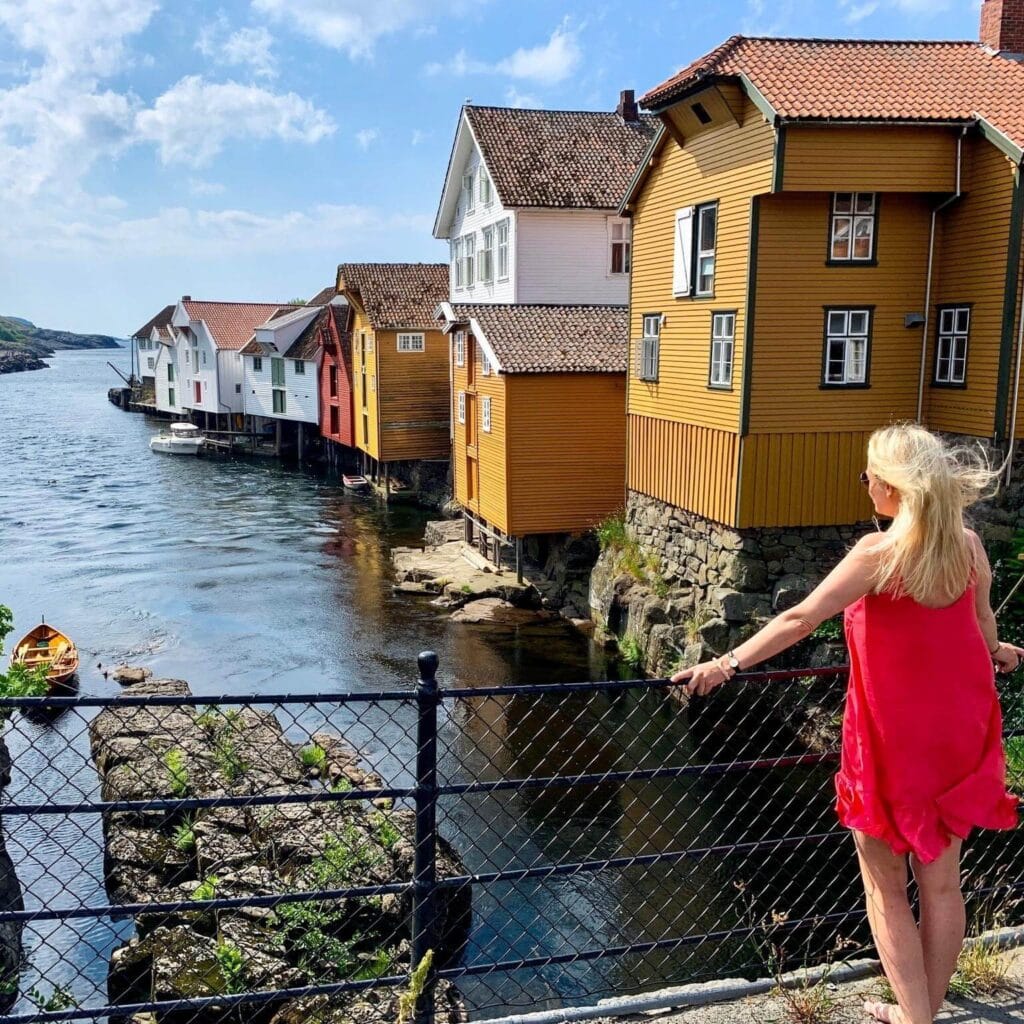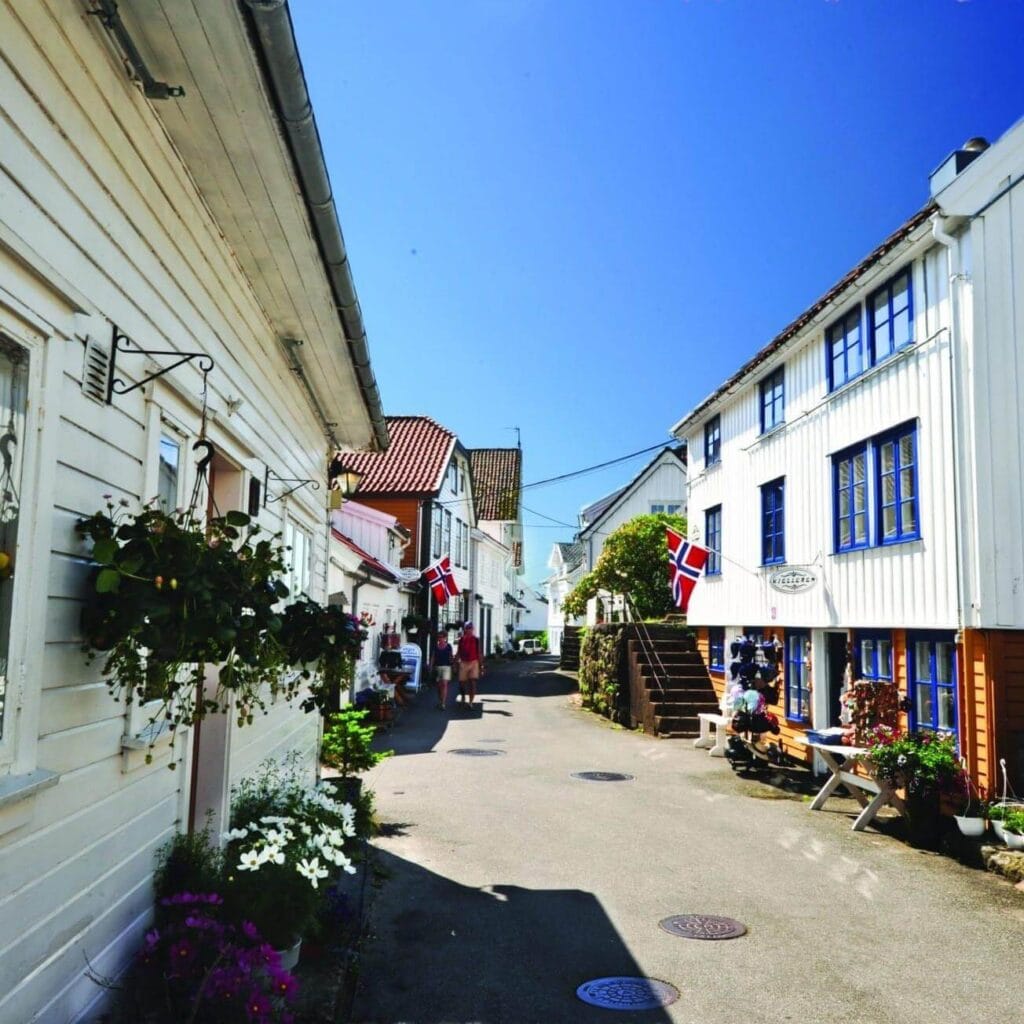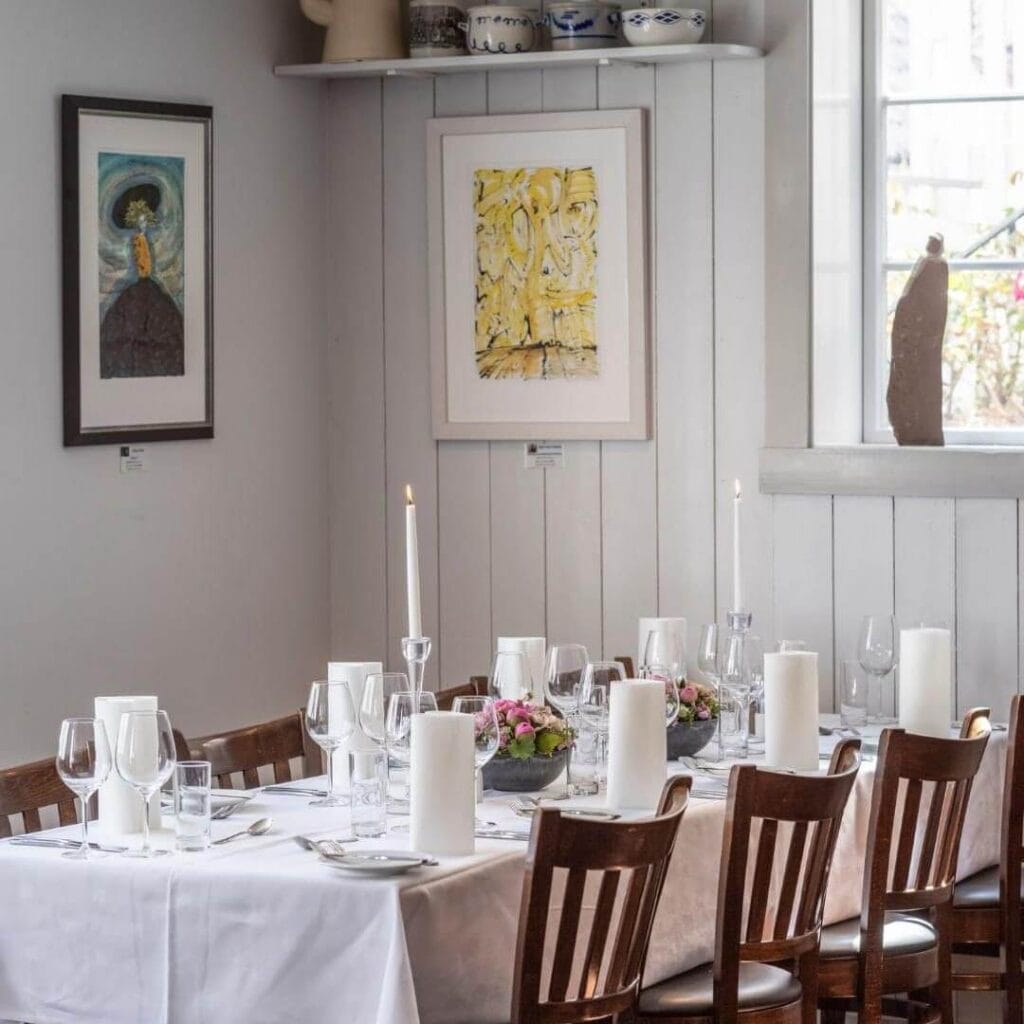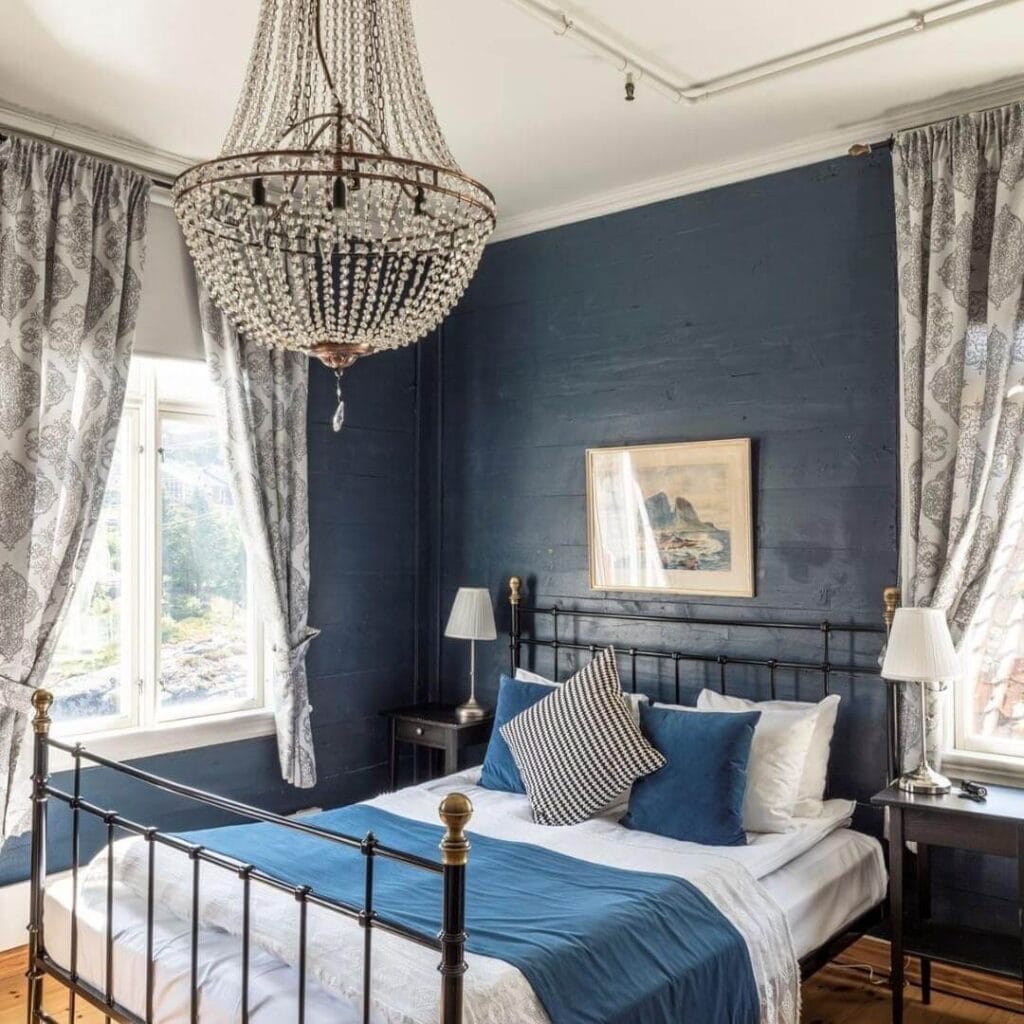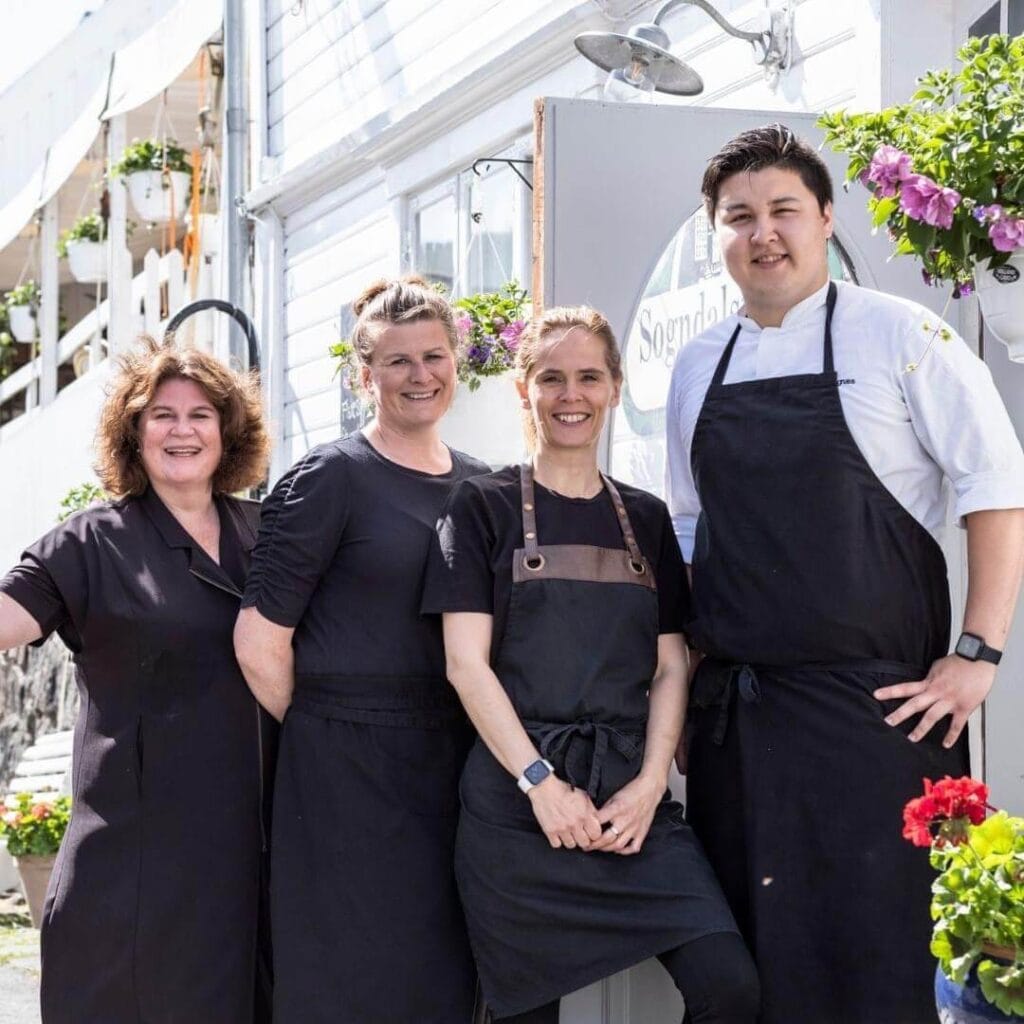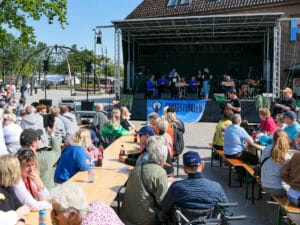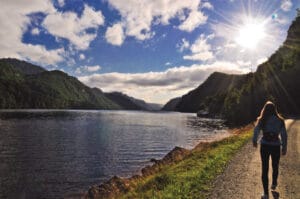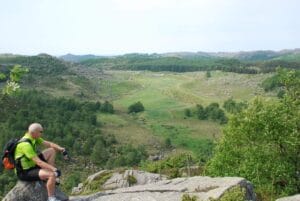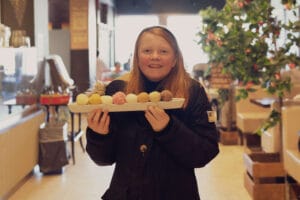
Sogndalstrand - an old trading port from the sailing ship era
Sogndalstrand is a small village located at the southern tip of Rogaland. In this idyllic setting, you will find Sogndalstrand Kulturhotell housed in a newly restored timber building from the 1700s-1800s.
Sogndalstrand is worth a visit. It is the only settlement in Norway where both the wooden houses from the 1700s and 1800s, as well as the surrounding cultural landscape, are protected by the Norwegian Directorate for Cultural Heritage (Riksantikvaren). Sogndalstrand was an old trading port and a separate municipality until 1944. As a trading port, it was a town where citizens had the privilege to engage in trade, unload goods (import), and load goods (export). Today, Sogndalstrand features a cultural hotel, gallery, general store, fishing museum, and an outdoor amphitheater hosting various concerts and plays throughout the year. You will also find a sculpture pier, marked hiking trails, sanitary facilities, a modern guest harbor - and not least, sea rafting.
Accommodation and dining
Sogndalstrand Kulturhotell består av 10 ulike hus. Et utradisjonelt hotell – åpent for restaurantgjester, overnatting, kurs- og konferanser, feiringer og festlige anledninger. Folvik Kafé serverer alt fra enklere retter til de flotteste selskaper. Det er pub i det gamle fengselet, som er åpent enkelte dager, og i maritime lokaler holdes kurs og konferanser. Her er også en liten landhandel med en rekke lokale produkter.
Read more about Sogndalstrand Kulturhotell here.
Culture and history
Sogndalstrand in the old days
As early as the 1660s, Sogndalstrand was mentioned as one of the most important small towns in Norway. In 1858, the town became its own municipality, and even before that, it had held trading rights for centuries. In 1944, several outlying areas merged to form Sokndal municipality. By 1863, the town had over 500 residents.
Fishing was important for this coastal town. In 1886, 763 salmon were caught from the river, with an average weight of six kilograms. In addition to fishing, people made a living from trade, shipping, and agriculture. In the 1870s, there were 20 shops, four bakeries, two liquor stores, and four pubs. There was also a customs office, a bank, a spinning mill, a sailing harbor, a post office, a midwife, a priest, and even its own prison. This prison was often used as a drunk tank when things got out of hand on Saturday nights.
Norway's industrialization also affected Sogndalstrand. People moved to the cities and the herring disappeared, which caused difficulties for the fishermen. The shops closed, one after another, and Sogndalstrand eventually became a ghost town. The houses fell into disrepair, and the last shop closed in 1994.
Sogndalstrand – from 1990 to today
Hele landsbyen ble til slutt forlatt. Eli og Jan Oddvar Omdal ble imidlertid interessert i Sogndalstrand, og i 1994 leide de «Krambua» (fra 1862) og startet med Krambukafé, som et idealistisk engasjement for å fokusere på dette unike bostedet. Hotellet startet i en av bygningene til det gamle Skredderhuset (fra 1831), og i dag består Sogndalstrand Kulturhotell av 10 forskjellige bygninger, som innkvarterer både private gjester og har flotte konferanserom med utsikt direkte til lakseelva Sokna. Hotellet har også en restaurant med fokus på kortreist, hjemmelaget mat, og en pub i det gamle fengselet. Det eldste huset er fra 1831 og alle rommene er unike.
Bosetningen i Sogndalstrand has been preserved since 1994, along with the cultural landscape surrounding it. The Norwegian Directorate for Cultural Heritage has dubbed the place "Kystens Røros" (Røros of the Coast), likening it to the well-preserved mining town of Røros in Norway.
Photo gallery
Besøk Sogndalstrand
How to get there?
From Egersund; follow the RV44 to the south and follow the signs to the Sogndalstrand
From Flekkefjord; follow the RV44 to the west and follow the signs to the Sogndalstrand
See also: Visit Norway – Sogndalstrand
See also: Fjordnorway – Sogndalstrand
Category:
Geopark, Historic places, Kultur, Magma Geopark Sites, Sokndal, Top 20
Other experiences in Magma Geopark
See more experiences in Magma Geopark
